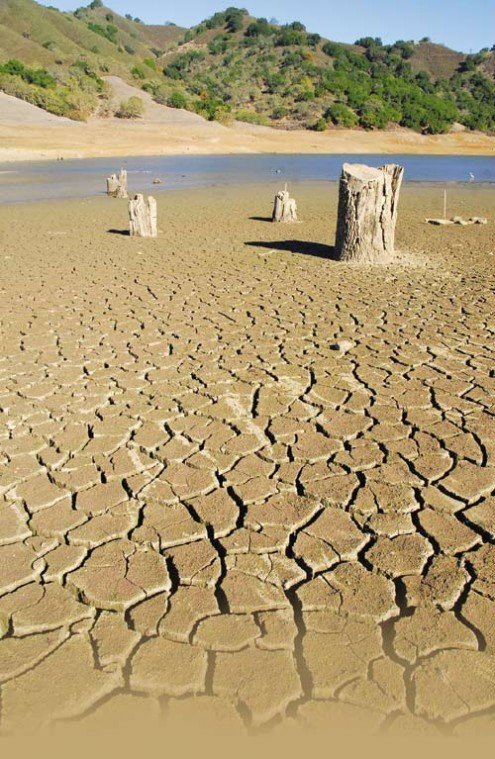It’s 70 degrees and sunny outside with not a rain cloud in
sight. Although families are enjoying more time in the California
sunshine this fall, the Santa Clara County Valley Water District
might impose mandatory water restrictions if rainfall does not pick
up by spring.
Sara Suddes – Staff Writer ss*****@************ch.com
It’s 70 degrees and sunny outside with not a rain cloud in sight. Although families are enjoying more time in the California sunshine this fall, the Santa Clara County Valley Water District might impose mandatory water restrictions if rainfall does not pick up by spring. Forecasts hover at a 10 percent chance of rain for the next week while water levels of many of Santa Clara County’s reservoirs are slowly receding.
In a typical year, half the county’s water supply comes from locally captured rainwater stored in the county’s 10 reservoirs. The other half is imported from origins hundreds of miles away in the snowcaps of the Sierra Nevada range. The snow melts and eventually flows into the Sacramento-San Joaquin River Delta.
There has been no significant rainfall in the past few months and the district is in a difficult position, said Susan Siravo, public relations manager for the water district. After a September court decision reduced the amount of water pumped from the Sacramento-San Joaquin River Delta by as much as 30 percent, the district finds itself doubly threatened.
Halfway through November, Gilroy has received 3.32 inches of rain this season, which begins July 1 and ends June 30, and 1.22 inches this month. Gilroy needs at least double that to reach the month’s average precipitation level.
“(This year) was a dry year and we haven’t had enough rain to make a huge dent,” Siravo said. “Any rain from now until February will be very significant.”
Because both major supplies of the county’s water have been reduced in the past months, the district requested a voluntary conservation that took effect in June, but could be enforced with severe restrictions come spring. Households that reduce their water usage by even 10 percent can make a significant difference, water officials said.
“At any given home, the outdoor sprinkler uses about half the water for that home,” Siravo said. “Outdoor irrigation can be a huge water waster.” Indoors, toilets use most of the water and the district encourages homeowners to install high-efficiency toilets in their bathrooms.
Even though many of the county’s smaller reservoirs are nearly empty, Diana Henderson, a weather forecaster at the National Weather Service Office in Monterey, said that there is no need for alarm just yet.
“Give it a while, there’s still plenty of time to panic,” Henderson said. Last year was drier than normal and rainfall levels are starting out slow this season, but the wettest month isn’t until January. Henderson characterized Coastal California’s climate as a “Mediterranean-type climate,” that receives little, if any, rain all summer and more during the winter months. Despite the lack of rain, weather stations’ rainfall levels in the Bay Area are where they should be this time of year, she said.
Gilroy farmers have not experienced any major impact from the lack of rain since mandatory water rationing has not yet taken effect.
“Water is low in the reservoirs but it’s too early to say it’s a drought yet,” said Mike Vogel of Menlo Growers on New Avenue in Gilroy. Primarily a citrus grower, Vogel welcomes the mild temperatures that have characterized this month. “The more heat the better,” he said.













